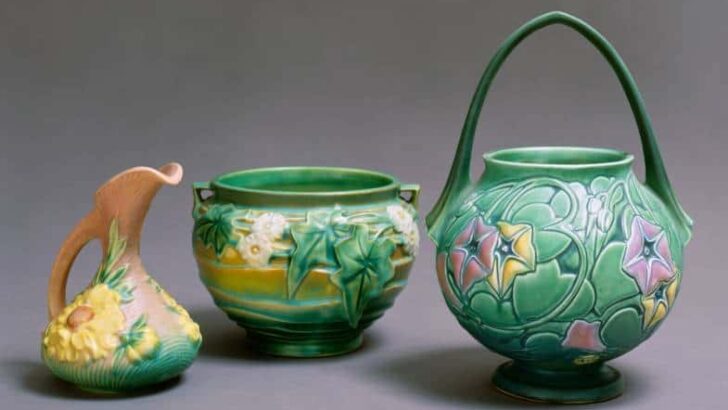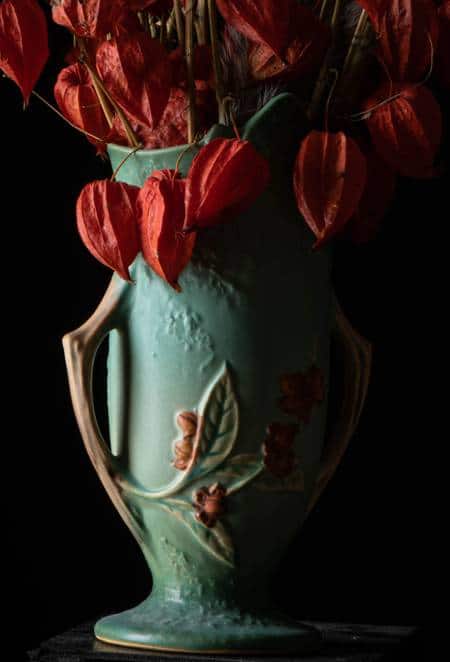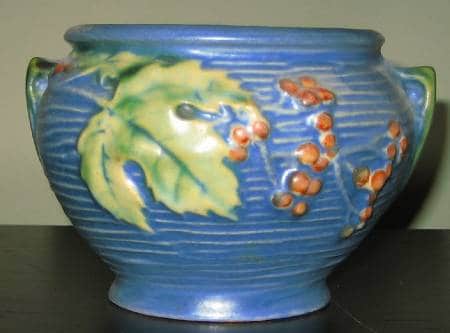Your cart is currently empty!
Is Roseville Pottery Valuable? 6 Key Factors in Valuation
Published:
Last Updated:

Affiliate Disclaimer
As an affiliate, we may earn a commission from qualifying purchases. We get commissions for purchases made through links on this website from Amazon and other third parties.
There is no doubt that it has a unique charm, but is Roseville Pottery valuable? The answer to this question is a resounding ‘yes’. Roseville pottery is currently one of the most valued and sought-after artifacts because of its antique nature, among other reasons. Pieces in excellent condition fetch the highest prices in the pottery market.
Roseville pottery prices have undergone price upheavals through time, where the value kept rising and falling. Recently, though, there has been a stabilization of the value of these pieces. The value of individual pieces varies depending on several factors, with the cheapest going for about $50.
If you’d like to know more about valuing other items of pottery, you can have a look at my check list here.
Why Roseville Pottery is Valuable
As mentioned in the introduction, Roseville pottery is among the most valuable pottery pieces today. Even though it has not been in production for years, Roseville pottery is still pretty popular among pottery enthusiasts and collectors today and for many years to come.
The value and demand for Roseville pottery are high today for many reasons, as will be discussed below. The main reason is that the creators focused on producing quality and unique pieces with alluring designs.

1) Good Quality
One of the things that the Roseville pottery company is known for is prioritizing quality above everything else. The first high-quality art pottery line created by the company was Roseville Rozane in 1900. Since then, all the subsequent pieces only kept getting better and better.
In the pottery world, pieces that are still in mint condition even years after production are valued the highest. Even though the last piece was crafted in the 1950s, most Roseville pottery pieces are still in top-tier condition. They are still as good as they were soon after they were made.
Therefore, most pieces of Roseville pottery are among the highest-priced in pottery terms. Damaged pieces usually undergo a restoration process to bring them back to their original state as much as possible. However, restored pieces are less valuable than those in their original mint state. To put it in perspective, restored pieces are usually about 50%-90% of a mint item.
2) The Pieces are Scarce
The rarity of a certain type of pottery increases its value. It follows the scarcity concept of supply and demand, where the shortage in the supply of a commodity boosts its value because of increased demand.
Roseville pottery was created within a 60-year window, and not a single piece has been created since 1954. This is one reason why it is scarce. In addition, the company made limited numbers of pottery lines such as Crystalis, Aztec, Fudji, and Della Robbia.
The rarity of these beautiful, quality artifacts has exponentially increased their value over the years. Today, Roseville pottery antiques are among the highest-priced.
3) Roseville Pottery Authenticity
While there are many counterfeit Roseville pottery items in the market, the real pieces are authentic. It is essential to know what to look out for to determine the authenticity of a Roseville piece so that you do not fall victim to a scam transaction.
One of the sure ways to determine the authenticity of Roseville pieces is by checking the markings on the underside of the artifact. Genuine Roseville pieces bear the original Roseville signature. Other factors to consider when checking for the authenticity of Roseville pottery are the type of glaze, the texture of the piece, and the design patterns.
Pieces of Roseville pottery are unique and, therefore, are highly sought after by collectors and pottery enthusiasts. As a result, they fetch high prices.
4) Aesthetics
The Roseville Pottery company applied different designs to decorate its artifacts. Some pottery pieces bore scenic landscape designs, others floral sprays, and others symmetrical patterns. All these pottery decorations are aesthetically pleasant.
The artists combined all the major elements of art to create an overall attractive product. These elements include color, patterns, size, and symmetry. Generally, the more aesthetically pleasing a piece of pottery, the higher its value.
Even so, it should be noted that aesthetic value is very subjective and, therefore, varies from one person to the next. Thus, it is rare to find pottery that appeases everyone aesthetically. Pieces with a universal aesthetic appeal are more valuable as they tend to be rare.
Roseville pottery easily falls under the category of pieces that offer universal aesthetic appeal, and for that reason, it is pretty valuable. The artists poured creativity and passion into the designs producing beauty that most people can reckon with.

5) Provenance
Provenance refers to a record of the past ownership of a piece. Roseville pottery is well known as there is a solid history of the company as well as the collections they produced. That said, if a prominent collector once owned an individual piece, it immediately receives a major boost on the market.
This also goes for pieces that may have been family heirlooms within notable family lines. The rich history bestows a stamp of importance on the pieces in question. Hence, these particular pieces or collections would be considered more valuable compared to pieces that lack an impressive provenance, if any.
The caveat here is that it is much easier to track down the ownership record of modern pottery as compared to much older pieces. Luckily, Roseville pottery was created within the last 100 years, so it would not be difficult to establish its provenance.
6) Desirability
The popularity of a type of pottery determines its value. The more sought-after it is, the more valuable it becomes. Today, Roseville pottery is arguably one of the most desired antique collectibles. The high desirability causes its intrinsic value to rise in the pottery market.
The desirability of Roseville pottery differs from line to line and changes at the same rate as the taste and preferences of the public. Even so, the unique style and top-tier quality of the pottery have kept it desirable for decades and for a long time to come.
Final Thoughts
Roseville pottery is still very much valuable. Owing to their rich history and unique molds, pieces of Roseville pottery are popular even though they have not been in production for decades. Their value keeps increasing as the years go by.
Reasons for the relatively high value of Roseville pottery include high quality, authenticity, provenance, rarity, and desirability. Also, the value differs from piece to piece as several factors come into play when determining how much individual pieces are worth.



